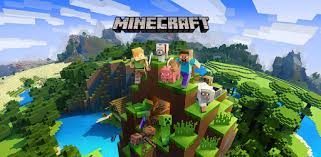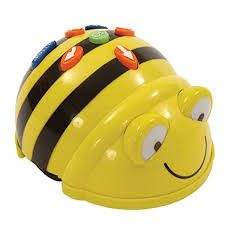“Gaming is hugely popular in the UK with over 85% of young people between the ages of 5-15 owning some type of gaming device”. (Bray 2001) When I was younger, my obsession was the ‘wii’ and my ‘nintendo DS.’ However, they did not serve any educational purposes personally due to the games I played. Games based learning is said to be as successful to a childs cognitive development as reading. Furthermore, kids learn more beneficial facts from video games to prepare them for their futures than they do in school. (M, Prensky.) Therefore, we need to find a way to embrace games-based learning in our lessons. With gaming being such a huge part of the 21st century this is crucial. We need to discover a way to use games-based learning in an educational form.
“children spend most of their time on games not found in schools”. (G, Beauchamp.) It is our job as student teachers to have an awareness of current games etc to show an interest. If we implement computer games into the classroom, we have to ensure the children know what we specifically want the game to be used for- whether it be enjoyment purposes or educational-. A child might then see this as not a reward but a tool for learning and engage in lessons more. When children are learning these transferrable skills needed to play these games at such a young age, their brains have already tackled complex skills that they will need for main subjects such as maths and literacy. (Bray 2012)
Pupils can gain a wide range of imperative skills from online gaming such as:
- They are a form of play; we use communication skills to interact with players.
- We have a laugh while completing games through socializing- interpersonal skills.
- Games have set rules which allows children to practice a routine.
- They usually have a storyline which we can then sympathise or empathise with, encourages us to show feelings.
- There are often codes to crack or puzzles to solve. Encourages our use of problem-solving skills.
- Games set motives which pushes us and motivates us to finish. (Ulicsak, M. and Williamson, B.)
This session, we were exploring games-based learning in the classroom. Specifically, we had the chance to interact with the computer game- Minecraft. It is formally described as a lego style adventure game that has no end; it is an infinite world. Initially founded in 2009- released in 2011- it has become a global sensation since. I thought it was a new game only introduced in recent years! Shows how much I know about it. I have watched my younger brother play this game – from which I presumed Minecraft seemed fairly complex- therefore I was keen to give this a go as I like being pushed out my comfort zone. To make everything a little easier, there is an educational option for the game- extremely practical for schools as there is different levels depending on age group. However, if the school wanted to permanently download this to always have access, they would need to purchase this as it only enables 10 log ins with the free trial.
We were tasked with creating an activity for children using the game ‘Minecraft.’ I faced an obstacle straight away as we were told to have downloaded the game prior to the lesson. This taught me the lesson of always be prepared for lessons. Fortunately, a member of my group already had the software downloaded. He also had a little prior knowledge of Minecraft and was able to support me. I had never used Minecraft before which made it more difficult as we had to spend time learning the basics. Firstly, we watched Youtube vidoes to get a true insight into what it was really about. We were to present to the class our ideas for how we would incorporate cross curricular subjects into Minecraft using an interdisciplinary plan provided by our lecturer. Interdisciplinary planning is an excellent approach for planning as it provides real life experiences in a range of contexts to suit any age group and suit their specific topics. To begin with I was not sure what to include as it was hard to think of activities for the four headings which included:
- Health and well- being
- Creative Writing
- Literacy (Listening and Talking
- Expresssive Arts
Health and Wellbeing
For this section, we initiated an idea for ‘survival mode.’ In order to survive in this mode, you need to kill the animals to survive (fight or flight kind of idea.) The aim of the game is to fend for yourself which includes building a shelter to sleep in and hunting your own food to eat. This then gives you lives as you will have a source of protein which provides energy. This conveys a realistic example for a child. If we do not have a balanced diet i.e protein etc we will also have no energy. This then linked to the skill development- allowing a child to make informed choices and decisions. The experience and out come as follows:
- Through taking part in a variety of events and activities, I am learning to recognise my own skills and abilities as well as those of others. HWB 1-19a
Creative Writing
By choice, whether in a selected group of your choice or independently. The task is to create a series of events they would like the figure on Minecraft to do. Through using the game, pupil could attempt to put the theory into practice through Minecraft. For example, build a den or learn the survival necessities such as being able to swim. After completed, children could be given the option to swap stories and try to complete other groups tasks. I used the experience and outcome:
- I can explore and experiment with digital technologies and can use what I learn to support and enhance my learning in different contexts. TCH 1-01a
Literacy (Listening and talking)
Form a debate with the stimuli “Is games-based learning educational?” Pupils could research the pros and cons and feedback to their group. Consulting them on their ideas and creating a plan for the debate. Linked to the following experience and outcome:
- When listening and talking with others for different purposes, I can exchange information, experiences, explanations, ideas and opinions, and clarify points by asking questions or by asking others to say more. LIT 1-09a
Expressive Arts
Allowing children to be successful learners and think creatively/ independently. There are multiple ways a child can convey their creative side through Minecraft from building houses and creating your own world. Including the experience and outcome:
To conclude todays lesson, I took full advantage when discussing other peers’ interdisciplinary plans as I was able to take note of their ideas. This allowed me to look at the game from another point of view which was very insightful. Also, encouraged me to think outside the box with ideas for when I have my own class. Overall, this lesson was very useful to me. I had no insight into how computer games could be educational and now I am keen to explore other forms and utilise them in the classroom environment. Children of this generation are ‘digitally native’ to technology. (Prensky, 2001) They are quick learners so can absorb information very quickly for operating computer games. I will probably learn more from them and am keen to do so!

Bray, O. (2001 ) Playful leaning: computer games in education [online] available: https://www.slideshare.net/Microsofteduk/playful-learning-computer-games-in-education/7-Computer_Games_Chapter_1_Why
Grace, J. (2019) [online] benefits and methods of interdisciplinary for kids available:https://www.schooliseasy.com/2017/10/benefits-methods-interdisciplinary-learning-kids/
Prensky, M. (2001) Digital natives, digital immigrants [online] available : http://moodle1819.uws.ac.uk/pluginfile.php/39816/mod_resource/content/1/Prensky%20-%20Digital%20Natives%2C%20Digital%20Immigrants%20-%20Part1.pdf
Ulicsak, M. and Williamson, B. (2010) Computer games and learning [online] available: https://www.nfer.ac.uk/media/1765/futl01.pdf


















